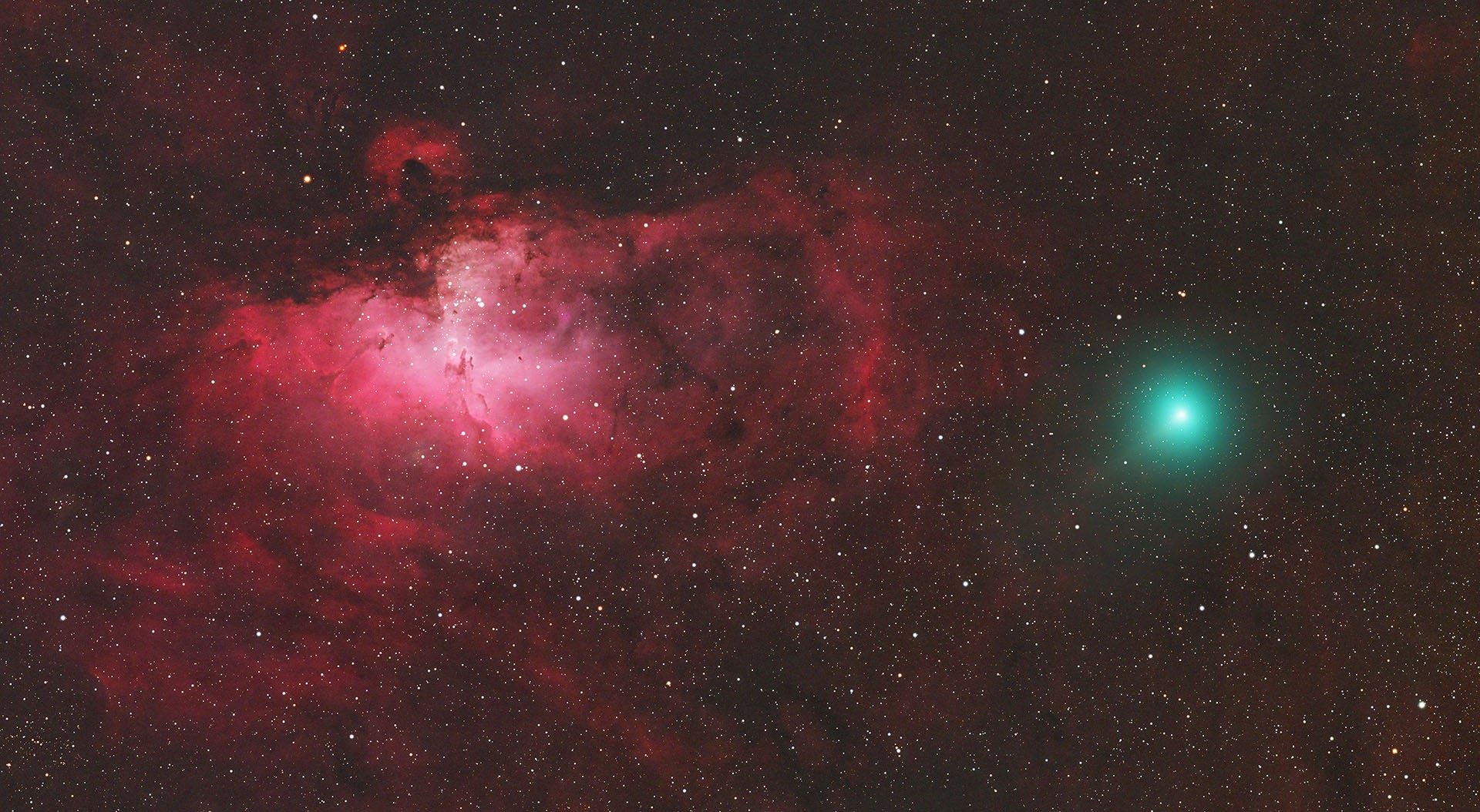Testing out some new gear
This past Thursday with full moon blazing, I tested out some new gear under pristine skies. I recently decided to revisit autoguiding. I have a few criteria to meet: no laptop and ease of use. You see I am old and come from the film days of ST-4 and my all time favorite the STV/efinder combination.
The SBIG SG-4 caught my eye since it requires no laptop in the field. One is necessary for initial focus on your guidescope, but as long as nothing changes with the scope/guider, just a click of the button and it guides away.
AP130EDTGF on APMACH1 mount with guidescope and SG-4 attached.
The guidescope selected is the Baader/AP guide rings combination for it’s promoted rigidity.
The additional ring support on the focused tube is why I went with the Baader/AP guidescope.
After initial setup of the SG-4 and focus achieved, I decided to also setup my Canon for first run with the Astronomic 12nm h-alpha filter. the goal was to begin collecting data on eastern veil.
Long story short, the SG-4 stores the XY calibration in the unit As long as the orientation of the SG-4/guidescope/mount remain constant, the SG-4 is always ready to guide with a click of the button
Here is the final part of the SG-4 calibration log. The most important part is the X+, X-, Y+, andY- movement in pixels and direction.
With the SG-4 calibrated and the Canon focused with the h-alpha filter, we are ready for a test run.
Here is a raw image at nearly 100% of the eastern veil nebula. It is a 15 minute auto guided frame. I did a simple polar scope alignment to begin the evening. I am very happy with the SG-4 in the backyard-the real test will come from a dark sky site.
100% crop of h-alpha eastern veil at ISO 1600 for 15 minutes with the SG-4/Baader/AP scope.
Easter Veil (NGC 6992)
Part of the Cygnus Loop, the Eastern Veil Nebula is one of the brighter sections of the loop and is visible in telescopes, especially with the aid of contrast enhancing filters.
Image acquisition: Taken with an AP130EDTGT and modified Canon T5i camera. 60 exposures of 2 minutes at ISO 1600 unguided were combined and processed in Pixinsight with final enhancement in PS CS. Taken during Greenbank Star Quest 2018.
App recommendation: Sky Safari AR
Looking for a free star gazing app? Want augmented reality, too? This is the app that I use to control my telescope and to get a fix on what is up in the night sky you simply point your phone or iPad at the sky and the app shows you exactly what objects are visible Planets, stars, deep sky objects like galaxies, clusters, and nebulae. I have the paid version and I am not sure if the free version has any annoying features, but so far I have found none in my trial. Give it a download tonight
Astrophoto Setup at Green Bank Observatory
Pretty nice weather was had at the 2018 Green Bank Star Quest. Nearly every night had excellent moments of clarity. This is the setup I used for the week. The Astro-Physics 130EDFGT riding on the Astro-Physics Mach1GTO mount with the modified Canon T5i camera and new Rokinon 85mm f1.4 lens. I used both instruments in imaging for the 4 nights. More images are in the processing cue. In this image you can see the Green Bank Telescope in the lower left quadrant. The GBT was very active during our stay at Green Bank.
Northern Cygnus from Green Bank Star Quest 2018
A new image was added today from the recent Green Bank Star Quest.
The bright star in the field is Deneb, one of the stars of the summer triangle. The uncanny likeness of the two closest nebulae to Deneb to the North America continent and a Pelican are remarkable. The Butterfly Nebula is located off of the second brightest star in the image, Sadr. The North American Nebula is a great visual target with binoculars from a dark sky site. It is larger and more diffuse than most observers realize. The highest contrast area is in the vicinity of the Gulf of Mexico. For a detailed notation of the area, please see this link.
Image acquisition: Taken at the Green Bank Star Quest 2018. A test of new Rokinon 85mm f1.4 shot at f4. No guiding for the 20 five minute exposures. All processing in Pixinsight.
Jeff's Blog
Join me on photography journeys from desert landscapes to deep sky wonders.
























